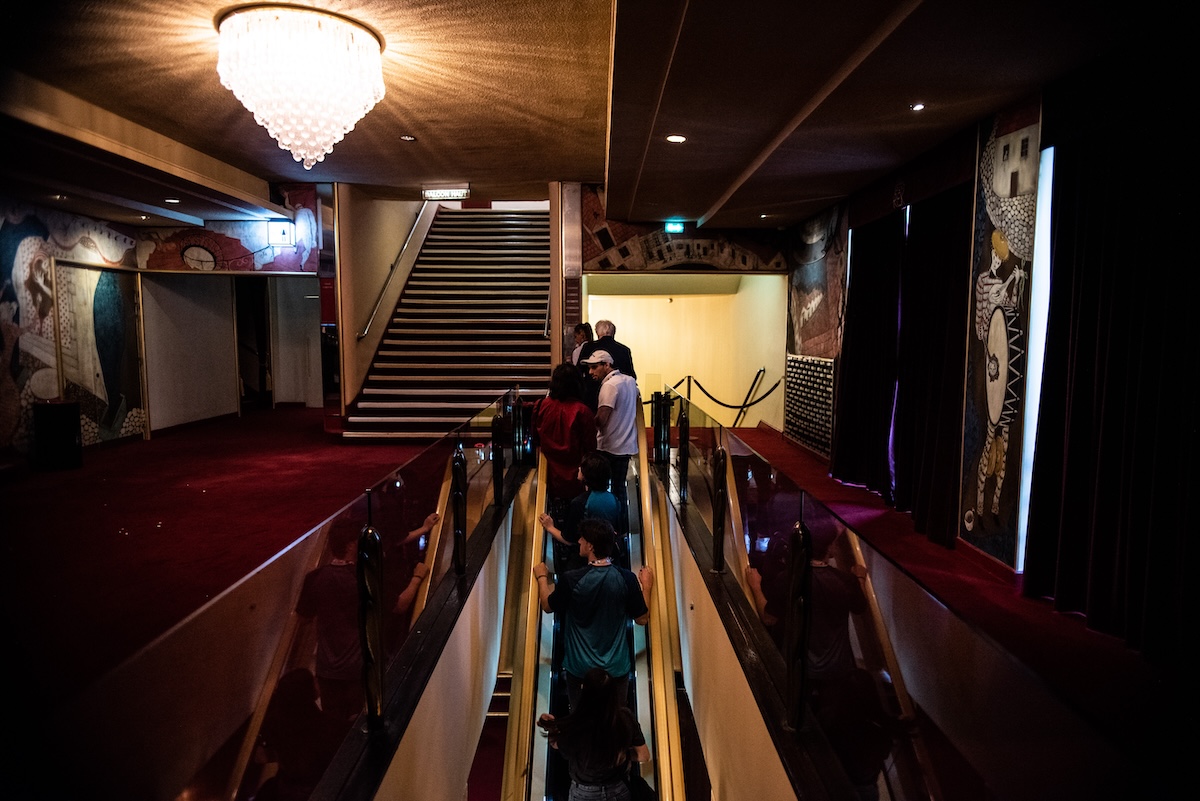
In October 2019, master filmmaker Martin Scorsese famously opined that movie theaters had become diluted. With the rise of franchise films and a heavy emphasis by Hollywood studios on intellectual property, the director of Taxi Driver and Raging Bull lamented that cinemas “have become amusement parks.”
He made the comments while speaking of his new four-hour epic, The Irishman, which was then playing at the BFI London Film Festival before premiering where most people would be able to see it: on Netflix. It should be noted that while he is obviously not a fan of superhero movies and the like, Scorsese holds the genre itself no ill will. He even admires the craft of the filmmaking that goes into them. Yet he wondered six years ago if they were also “creating another kind of audience that thinks cinema is that.”
It would seem the eight biggest cinema chains in North America have answered with a resounding yes, given the announcement Thursday that they are collectively spending more than $2.2 billion to renovate 21,000 screens and untold scores of movie houses. Given how movie theaters have still never fully recovered from the COVID pandemic (which noticeably occurred after Scorsese’s above comments), it’s a bold and proactive strategy which will include investing in improved sound and projection, seating and apparently even a more pronounced dine-in component—presumably in competition with the Alamo Drafthouse’s impressive business model.
For movie lovers, this sounds all well and good, but it was the other added component of the announcement that has left some on social media perplexed: the movie theater chains are also going to be installing pickle ball courts, ziplines, bowling alleys, and presumably other entertainments in some of their most refurbished movie houses.
They are becoming veritable amusement parks—or at the very least a modern entertainment center reminiscent of the arcade/laser tag/miniature golf hybrids that were so popular in the 1980s and ’90s.
As a cinephile who, indeed, writes about cinema for a living, this leaves mixed feelings. It would seem Scorsese’s fear of cinemas increasingly drifting toward the “theme park” aesthetic is coming to pass.
And yet, one might offer an alternative point: this could prove to be very good for the art-form that so many of us come to love. Indeed, the Goodfellas maestro’s comments were, again, made on the other side of the COVID pandemic. And while nearly every year since has shown steadily rising movie theater attendance around the globe, they still have not gotten back to 2019 numbers. In fact, movie theater attendance is softer in 2024 than 2023—in large part because movie studios and streaming services let the labor strikes of last year drag on for six months, leading to a dearth in content for theaters.
Yet a case can be argued that a major reason cinemas have not been able to return to the ticket sales of 2019 is because there is simply less content. With 2023 being the most “normal” year since the pandemic, its spring was still down 25 percent from 2019. However, there were also 25 percent fewer movies released by the major studios than there had been four years earlier. In other words, the studios have continued to make fewer and fewer movies in their increasingly risk-averse strategies, starving cinemas of attractions. It also ironically reinforces to audiences the lethal impression that there are only a handful of movies in a year they need to see. If moviegoing is seen as only an “event,” as opposed to a regular activity, the industry will continue to contract.
Which brings us back to those pesky pickle balls and ziplines. Admittedly, the idea of seeing folks gathering at cinemas for a round of bowling instead of popcorn triggers the “old man yelling at clouds” in me, it also seems like a shrewd strategy. When this writer was a child of the ‘90s and 2000s, going to the movies every weekend was just an activity kids enjoyed as much as the pool in the summer or a basketball court—or a mall.
Once such a crucial center of American life in the late 20th century, George Romero made a satire out of us being zombies to the shopping centers, the mall is itself on the verge of extinction. Nonetheless, young people and families still need places to go for entertainment and activity. They still need amusements. Thirty or forty years ago, that was represented by a center of capitalism where a movie theater might be just one component. Tomorrow it could be a theater house where multiplex screens are just one option for activities.
Admittedly, it is far too early to say how this will actually work, much less how it might affect (say) the lack of screens available for independent movies that could play for a large audience. But in theory, the prospect of encouraging new generations of moviegoers to see a movie theater as a weekend destination where they could hang out, have fun, and hell, even see a movie, could be a way to encourage the old habits studios have let atrophy.
The post Can Movie Theaters Become the New Malls? appeared first on Den of Geek.




